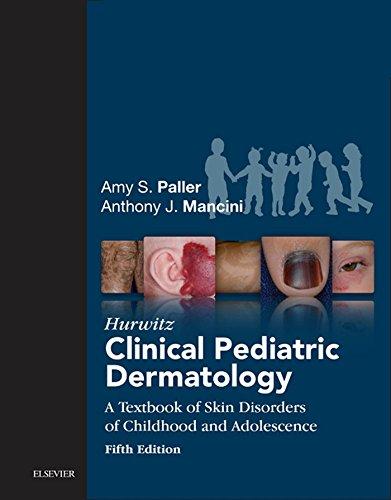Imaging Technologies and Transdermal Delivery in Skin Disorders Pramanik
Visit to download the full and correct content document: https://ebookmass.com/product/imaging-technologies-and-transdermal-delivery-in-ski n-disorders-pramanik/
More products digital (pdf, epub, mobi) instant download maybe you interests ...
Machining and Tribology Alokesh Pramanik
https://ebookmass.com/product/machining-and-tribology-alokeshpramanik/
Nanostructures for Drug Delivery. A volume in Micro and Nano Technologies 1st Edition Edition Ecaterina Andronescu And Alexandru Mihai Grumezescu (Eds.)
https://ebookmass.com/product/nanostructures-for-drug-delivery-avolume-in-micro-and-nano-technologies-1st-edition-editionecaterina-andronescu-and-alexandru-mihai-grumezescu-eds/
Hurwitz Clinical Pediatric Dermatology E Book: A Textbook of Skin Disorders of Childhood and Adolescence 5th Edition, (Ebook PDF)
https://ebookmass.com/product/hurwitz-clinical-pediatricdermatology-e-book-a-textbook-of-skin-disorders-of-childhood-andadolescence-5th-edition-ebook-pdf/
Paller and Mancini - Hurwitz Clinical Pediatric Dermatology: A Textbook of Skin Disorders of Childhood & Adolescence 6th Edition Amy S. Paller
https://ebookmass.com/product/paller-and-mancini-hurwitzclinical-pediatric-dermatology-a-textbook-of-skin-disorders-ofchildhood-adolescence-6th-edition-amy-s-paller/
Single
Skin and Double Skin Concrete Filled Tubular
Structures
: Analysis and Design Mohamed
Elchalakani
https://ebookmass.com/product/single-skin-and-double-skinconcrete-filled-tubular-structures-analysis-and-design-mohamedelchalakani/
Articulation and Phonological Disorders: Speech Sound Disorders in Children 8th Edition, (Ebook PDF)
https://ebookmass.com/product/articulation-and-phonologicaldisorders-speech-sound-disorders-in-children-8th-edition-ebookpdf/
Articulation and Phonological Disorders: Speech Sound Disorders in Children 8th Edition
John E. Bernthal
https://ebookmass.com/product/articulation-and-phonologicaldisorders-speech-sound-disorders-in-children-8th-edition-john-ebernthal/
Health and Health Care Delivery in Canada Third Edition
Valerie D. Thompson
https://ebookmass.com/product/health-and-health-care-delivery-incanada-third-edition-valerie-d-thompson/
Skin Disease E Book: Diagnosis and Treatment (Skin Disease: Diagnosis and Treatment (Habif)) 3rd Edition, (Ebook PDF)
https://ebookmass.com/product/skin-disease-e-book-diagnosis-andtreatment-skin-disease-diagnosis-and-treatment-habif-3rd-editionebook-pdf/
ImagingTechnologiesandTransdermal DeliveryinSkinDisorders
ImagingTechnologiesandTransdermal DeliveryinSkinDisorders
Editedby ChenjieXu
XiaomengWang
ManojitPramanik
Editors
Dr.ChenjieXu
NanyangTechnologicalUniversity SchoolofChemicalandBiomedical Engineering
62NanyangDrive 637459Singapore Singapore
Dr.XiaomengWang NanyangTechnologicalUniversity LeeKongChianSchoolofMedicine 59NanyangDrive 636921Singapore
Singapore
Dr.ManojitPramanik NanyangTechnologicalUniversity SchoolofChemicalandBiomedical Engineering
62NanyangDrive 637459Singapore Singapore
Allbookspublishedby Wiley-VCH arecarefullyproduced.Nevertheless, authors,editors,andpublisherdonot warranttheinformationcontainedin thesebooks,includingthisbook,to befreeoferrors.Readersareadvised tokeepinmindthatstatements,data, illustrations,proceduraldetailsorother itemsmayinadvertentlybeinaccurate.
LibraryofCongressCardNo.: appliedfor
BritishLibraryCataloguing-in-Publication Data
Acataloguerecordforthisbookis availablefromtheBritishLibrary.
Bibliographicinformationpublishedby theDeutscheNationalbibliothek TheDeutscheNationalbibliotheklists thispublicationintheDeutsche Nationalbibliografie;detailed bibliographicdataareavailableonthe Internetat <http://dnb.d-nb.de>
©2020Wiley-VCHVerlagGmbH& Co.KGaA,Boschstr.12,69469 Weinheim,Germany
Allrightsreserved(includingthoseof translationintootherlanguages).No partofthisbookmaybereproducedin anyform–byphotoprinting, microfilm,oranyothermeans–nor transmittedortranslatedintoa machinelanguagewithoutwritten permissionfromthepublishers. Registerednames,trademarks,etc.used inthisbook,evenwhennotspecifically markedassuch,arenottobe consideredunprotectedbylaw.
PrintISBN: 978-3-527-34460-4
ePDFISBN: 978-3-527-81466-4
ePubISBN: 978-3-527-81464-0
oBookISBN: 978-3-527-81463-3
Typesetting SPiGlobal,Chennai,India PrintingandBinding
Printedonacid-freepaper
10987654321
Contents
Foreword xvii
1SkinStructureandBiology 1
Wei-MengWoo
1.1Introduction 1
1.2SkinStructure 2
1.2.1OverviewofSkinTissueOrganization 2
1.2.1.1ThickSkinandThinSkin 2
1.2.2Epidermis 3
1.2.2.1StratumBasale 5
1.2.2.2StratumSpinosum 5
1.2.2.3StratumGranulosum 6
1.2.2.4StratumLucidum 6
1.2.2.5StratumCorneum 6
1.2.3Dermis 6
1.2.4Hypodermis 7
1.2.5SkinAppendages 8
1.3SkinBiology 9
1.3.1Homeostasis:EpidermalSelf-renewal 9
1.3.2FormationofaWaterBarrier 10
1.3.3GettingAcrosstheWaterBarrier 11 References 12
2WoundHealingandItsImaging 15
JiahShinChin,LeighMadden,SingYianChew,AnthonyR.J.Phillips andDavidL.Becker
2.1HemostasisandEssentialInflammation 15
2.2Re-epithelialization 18
2.3GranulationTissueFormation 19
2.4ScarTissueFormation 20
2.5ImagingofWoundHealing 21
2.6MacroscopicDigitalImagingforWoundSize 22
2.7HyperspectralandMultispectralImaging 22
2.8Near-InfraredSpectroscopy 23
2.9RamanImaging 23
2.10ConfocalMicroscopy 24
2.11MultiphotonImagingandSecondHarmonics 24 References 27
3CommonSkinDiseases:ChronicInflammatoryand AutoimmuneDisorders 35
NavinKumarVerma,MauriceAdrianusMoniquevanSteensel, PraseethaPrasannan,ZhiShengPoh,AlanD.IrvineandHazelH.Oon
3.1Introduction 35
3.2Psoriasis 36
3.2.1DefinitionandPrevalence 36
3.2.2ClinicalFeatures,Pathogenesis,andPathophysiology 37
3.2.3Diagnosis 39
3.2.4Therapy 40
3.3AtopicDermatitis(AD) 40
3.3.1DefinitionandPrevalence 40
3.3.2ClinicalFeatures,Pathogenesis,andPathophysiology 41
3.3.3Diagnosis 42
3.3.4Therapy 43
3.4Scleroderma 43
3.4.1DefinitionandPrevalence 43
3.4.2ClinicalFeatures,Pathogenesis,andPathophysiology 44
3.4.3Diagnosis 44
3.4.4Therapy 45
3.5Dermatomyositis(DM) 45
3.5.1DefinitionandPrevalence 45
3.5.2ClinicalFeatures,Pathogenesis,andPathophysiology 46
3.5.3Diagnosis 46
3.5.4Therapy 47
3.6CutaneousLupusErythematosus(CLE) 47
3.6.1DefinitionandPrevalence 47
3.6.2ClinicalFeatures,Pathogenesis,andPathophysiology 47
3.6.3Diagnosis 48
3.6.4Treatment 49
3.7GeneralizedVitiligo(GV) 49
3.7.1DefinitionandPrevalence 49
3.7.2ClinicalFeatures,Pathogenesis,andPathophysiology 49
3.7.3Diagnosis 50
3.7.4Treatment 51
3.8ConcludingRemarks 51 Acknowledgments 51 References 52
4CommonSkinDiseases:AutoimmuneBlisteringDisorders 61 NavinKumarVerma,ShermaineWanYuLow,HazelH.Oon,DermotKelleher andMauriceAdrianusMoniquevanSteensel
4.1Introduction 61
4.2Pemphigus 62
4.2.1DefinitionandPrevalence 62
4.2.2ClinicalFeatures,Pathogenesis,andPathophysiology 62
4.2.2.1PemphigusVulgaris(PV) 63
4.2.2.2PemphigusFoliaceous(PF) 64
4.2.2.3ParaneoplasticPemphigus(PNP) 64
4.2.2.4IgAPemphigus 66
4.2.2.5PemphigusErythematosus(PE) 66
4.2.2.6Drug-InducedPemphigus 66
4.2.3Diagnosis 67
4.2.4Treatment 67
4.3Pemphigoid 68
4.3.1DefinitionandPrevalence 68
4.3.2ClinicalFeatures,Pathogenesis,andPathophysiology 68
4.3.2.1BullousPemphigoid(BP) 68
4.3.2.2MucousMembranePemphigoid(MMP) 69
4.3.2.3PemphigoidGestationis(PG) 69
4.3.3Diagnosis 70
4.3.4Treatment 70
4.4DermatitisHerpetiformis(DH) 70
4.4.1DefinitionandPrevalence 70
4.4.2ClinicalFeatures,Pathogenesis,andPathophysiology 71
4.4.3Diagnosis 71
4.4.4Treatment 71
4.5EpidermolysisBullosaAcquisita(EBA) 72
4.5.1DefinitionandPrevalence 72
4.5.2ClinicalFeatures,Pathogenesis,andPathophysiology 72
4.5.3Diagnosis 73
4.5.4Treatment 73
4.6ConcludingRemarksandFutureDirections 73 Acknowledgments 74 References 74
5CommonSkinDiseases:SkinCancer 83 TuyenT.L.Nguyen,EricTaraporeandScottX.Atwood
5.1Introduction 83
5.2BasalCellCarcinoma 83
5.2.1RiskFactors 84
5.2.2Classification 85
5.2.3CellofOrigin 85
5.2.4SignalingPathways 86
5.2.5CommonTreatments 87
5.3SquamousCellCarcinoma 88
5.3.1RiskFactors 89
5.3.2Classification 89
5.3.3CellofOrigin 90
5.3.4SignalingPathways 90
5.3.5CommonTreatments 91
5.4Melanoma 92
5.4.1RiskFactors 92
5.4.2Classification 93
5.4.3CellofOrigin 94
5.4.4SignalingPathways 94
5.4.5CommonTreatments 94
5.5ConcludingRemarks 95 References 96
6PreclinicalModelsforDrugScreeningandTarget Validation 105
IvoJ.H.M.deVos,JuliaVerbistandMauriceA.M.vanSteensel
6.1Introduction 105
6.2 ExVivo ModelsofHumanSkin 105
6.2.1Introduction 105
6.2.2 ExVivo ModelsofSkinBarrierFunctionandDermalAbsorption 107
6.2.3 ExVivo ModelsofCutaneousWoundHealing 107
6.2.4 ExVivo HairFollicleCulture 108
6.3 InVitro ModelsofHumanSkin 108
6.3.1Introduction 108
6.3.2Two-DimensionalCellCultureModels 109
6.3.3Three-DimensionalReconstructedHumanSkinModels 109
6.3.3.1ReconstitutedHumanEpidermisModels 110
6.3.3.2ReconstitutedHumanDermisModels 111
6.3.3.3ReconstitutedSkinEquivalentModels 111
6.3.3.4Organoids 112
6.4 InVivo AnimalModels 112
6.4.1 Caenorhabditiselegans112
6.4.1.1Introduction 112
6.4.1.2AnatomyandPhysiologyoftheRoundwormEpidermis 112
6.4.1.3TheUseof Caenorhabditiselegans toStudyCutaneousWound Healing 113
6.4.2 Drosophilamelanogaster113
6.4.2.1Introduction 113
6.4.2.2AnatomyandPhysiologyoftheFruitFlyEpidermis 114
6.4.2.3StudyingCutaneousWoundHealingUsingFruitFlies 114
6.4.2.4InsightsinCutaneousInnateImmunityfrom Drosophila melanogaster115
6.4.2.5FruitFlyModelsofBullousDermatoses 115
6.4.2.6FruitFlyModelsofSkinCancer 115
6.4.3 Daniorerio116
6.4.3.1Introduction 116
6.4.3.2AnatomyandPhysiologyofZebrafishSkin 116
6.4.3.3ZebrafishModelstoStudyPigmentationandMelanoma 117
6.4.3.4StudyingCutaneousWoundHealingUsing Daniorerio117
6.4.3.5ZebrafishasPlatformforDrugDevelopment 117
6.4.3.6ZebrafishModelsofGenodermatoses 118
6.4.4 Musmusculus118
6.4.4.1Introduction 118
6.4.4.2AnatomyandPhysiologyofMurineSkin 119
6.4.4.3MurineModelsforStudyingCutaneousWoundHealing 120
6.4.4.4MurineModelsofPsoriasis 120
6.4.4.5MouseModelsofAutoimmuneBullousDermatoses 120
6.4.4.6StudyingMelanomaUsingMouseModels 121
6.4.4.7MouseandRatModelsofAlopeciaAreata 121
6.4.4.8InsightsinAcnePathogenesisandComedolysisfromMouse Models 122
6.4.5 Caviaporcellus122
6.4.5.1Introduction 122
6.4.5.2AnatomyandPhysiologyofGuineaPigSkin 123
6.4.5.3StudyingDermatophytosesUsingGuineaPigs 123
6.4.5.4GuineaPigModelsofEpidermalPermeabilityTopicalIrritant Testing 123
6.4.5.5StudyingBurnWoundsUsingGuineaPigs 123
6.4.5.6GuineaPigModelsforPigmentationStudies 124
6.4.6 Oryctolaguscuniculus124
6.4.6.1Introduction 124
6.4.6.2AnatomyandPhysiologyofLeporineSkin 124
6.4.6.3RabbitModelsofAcneVenenataandContact Dermatitis 125
6.4.6.4RabbitModelsofCutaneousWoundHealingand Scarring 125
6.4.6.5RabbitModelsforGenodermatoses 126
6.4.7 Canislupusfamiliaris126
6.4.7.1Introduction 126
6.4.7.2AnatomyandPhysiologyofDogSkin 126
6.4.7.3DogModelsofAtopicDermatitis 126
6.4.7.4DogModelsofAutoimmuneDisorders 127
6.4.7.5StudyingFollicularHyperkeratosisandKeratolysisinDogs 127
6.4.7.6DogModelsofMucosalMelanoma 127
6.4.7.7BullousDermatosesinDogs 128
6.4.8 Susscrofadomesticus128
6.4.8.1Introduction 128
6.4.8.2AnatomyandPhysiologyofPigSkin 128
6.4.8.3PorcineModelsofCutaneousWoundHealing 129
6.4.8.4PigModelsofCutaneousPermeability 129 References 129
7SkinTissueEngineeringwithNanostructuredMaterials 147 ZahraDavoudiandQunWang
7.1Introduction 147
7.2NanostructuredMaterialsforSkinTissueEngineering 148
7.2.1NaturalBiomaterialsforSkinTissueEngineering 148
7.2.1.1Collagen,CS,andBlendofTwo 148
7.2.1.2FibronectinandHyaluronicAcid(HA) 149
7.2.2SyntheticPolymersforSkinTissueEngineering 152
7.2.2.1PLA,PGA,andPolyurethaneHomopolymers 152
7.2.2.2PLGACopolymersandBlenders 153
7.2.3BlendofNaturalandSyntheticMaterials 153
7.3FabricationTechniques 154
7.3.1Self-AssemblyandPhaseSeparation 154
7.3.2Electrospinning 156
7.4ClinicalApplicationofTissueEngineeredSkin 157
7.4.1SkinGrafts 157
7.4.2StemCellApplicationinSkinTissueEngineering 159
7.5Summary 162 References 163
8TopicalandTransdermalDeliverywithChemicalEnhancers andNanoparticles 169
ChandrashekharVoshavar,PraveenKumarVemulaandSrujanMarepally
8.1Introduction 169
8.2AnatomyofSkin/SkinStructure 170
8.3SkinPermeationRoutes 171
8.4ChemicalEnhancers(CEs)orSkinPenetrationEnhancers 172
8.4.1CharacteristicsofanIdealChemicalEnhancer 173
8.4.2ClassificationofChemicalEnhancers 173
8.4.2.1Water 173
8.4.2.2Alcohols,FattyAlcohols,andGlycols 175
8.4.2.3Amides/AzonesandDerivatives 175
8.4.2.4Esters 176
8.4.2.5SulfoxidesandSimilarChemicals 177
8.4.2.6Ureas 177
8.4.2.7FattyAcids 178
8.4.2.8EssentialOils(EOs),Terpenes,andTerpenoids 179
8.4.2.9Surfactants 180
8.4.2.10PyrrolidonesandDerivatives 181
8.4.2.11Phospholipids 182
8.4.2.12Cyclodextrins 182
8.5TransdermalDeliveryUsingNanoparticles 182
8.5.1LipidBasedNanoparticles 184
8.5.2PolymerBasedNanoparticles 185
8.5.2.1NanoparticlesBasedonBiodegradableSyntheticPolymers 186
8.5.2.2NanoparticlesBasedonBiodegradableSyntheticPolymers 187
8.5.2.3CationicHybridPolymericNanoparticlesforNucleicAcid Delivery 188
8.5.2.4MechanismofPolymericNanoparticlesSkinPermeation 189
8.6PeptidesforSkinPermeation 189
8.7Peptide–NucleicAcidNanoconjugates 190
8.8SphericalNucleicAcids 191
8.9Conclusion 191
References 192
9Needle-FreeJetInjectorsforDermalandTransdermalDelivery ofActives 201
MicheleSchlich,RositaPrimavera,FrancescoLai,ChiaraSinico andPaoloDecuzzi
9.1Introduction 201
9.2ComponentsandFunctioningPrinciple 203
9.3ModulatingtheDepthofActiveDelivery 203
9.4ClinicalandPreclinicalUseofNeedle-FreeJetInjectorsforSystemic DrugDelivery 206
9.4.1Vaccines 206
9.4.2Insulin 208
9.4.3GrowthHormone 210
9.4.4Triptans 211
9.4.5Others 211
9.5ClinicalandPreclinicalUseofNeedle-FreeJetInjectorsforLocalDrug Delivery 212
9.5.1LocalAnesthetics 212
9.5.2Others 213
9.6FuturePerspectives:JetInjectionforNano-/Microparticles 215 References 216
10MicroneedlesforTransdermalDrugDelivery 223
EmanM.MigdadiandRyanF.Donnelly
10.1Introduction 223
10.2Microneedles 223
10.2.1MNDeliveryStrategies 225
10.2.1.1SolidMNs 225
10.2.1.2CoatedMNs 226
10.2.1.3HollowMNs 227
10.2.1.4DissolvingMNs 228
10.2.1.5Hydrogel-FormingMNs 230
10.2.2MNFabricationMethods 232
10.2.3MNsandVaccineDelivery 235
10.2.4MNsforPatientDrugMonitoring 237
10.2.5MNSkinInsertionandRecoveryProcess 239
10.2.6PainPerceptionandSkinAdverseReactionsofMNApplication 242
10.2.7MNProducts 243
10.2.8CombinationofMNswithOtherTechniques 245
10.2.9MN-AssistedMicroparticleandNanoparticlePermeation 245
10.3MicroneedlesinManagementofSkinDisorders 247
10.4FutureConsiderationsforMNTechnology 249
10.5Conclusion 250 References 251
11Ultrasound-EnhancedTransdermalDrugDelivery 271
JamesJingKwanandSunaliBhatnagar
11.1Introduction 271
11.2PrinciplesinUltrasound 271
11.2.1AcousticWaves 271
11.2.2UltrasoundTransducersandInstrumentation 272
11.2.3PropagationofUltrasound 274
11.2.4UltrasoundPhenomena 274
11.2.4.1MechanicalEffects 274
11.2.4.2ThermalEffects 275
11.2.4.3AcousticCavitation 275
11.2.5MechanismsofAction 276
11.3StateoftheArtinUltrasound-EnhancedTransdermalDrug Delivery 277
11.3.1ModesofDelivery 277
11.3.1.1UltrasoundPretreatment 277
11.3.1.2Co-applicationofUltrasoundandDrug 278
11.3.2DrugDosageMedium 279
11.3.3Ultrasound-AssistedDrugDelivery:DrugFormulationsandSafety Concerns 280
11.3.3.1DrugFormulations 280
11.3.3.2SafetyConcerns 282
11.3.4ApplicationsofUltrasound-EnhancedTransdermalDelivery 283
11.3.4.1ImmunizationUsingUltrasound 283
11.4Conclusions 284 References 284
12IontophoresisEnhancedTransdermalDrugDelivery 291
XiayuNing,RazinaZ.SeeniandChenjieXu
12.1Introduction 291
12.1.1Hyperhidrosis 292
12.1.2DeliveryofAnestheticsforPainManagement 292
12.1.3DiagnosisofCysticFibrosis 292
12.1.4GlucoseMonitoring 293
12.1.5GrowingInterest 293
12.2EnhancingTransdermalDrugDeliveryUsingIontophoresis Alone 294
12.2.1IontophoreticTransdermalDeliveryofSmallMolecules 297
12.2.2IontophoreticTransdermalDeliveryofMacromolecules 297
12.3EnhancingTransdermalDrugDeliveryUsingCombinationof IontophoresisandOtherApproaches 300
12.3.1IontophoresiswithChemicalEnhancers 300
12.3.2IontophoresiswithMicroneedles 302
12.3.3IontophoresisandNanoparticles 303
12.4SummaryandOutlook 304 References 304
13UltrasoundImaginginDermatology 309
JihunKim,SangyeonYounandJaeYounHwang
13.1Introduction 309
13.2ThePhysicsofUltrasound 309
13.3UltrasonicTransducers 313
13.3.1PiezoelectricMaterials 314
13.3.1.1PZTCeramics 316
13.3.1.2PiezoelectricSingleCrystals 316
13.3.1.3Relaxor-BasedSingleCrystals 316
13.3.2MatchingLayer 317
13.3.3BackingLayer 317
13.3.4Single-ElementUltrasoundTransducers 318
13.3.5ArrayUltrasoundTransducers 318
13.4UltrasoundImagingSystemsforSkinDiagnosis 320
13.4.1UltrasoundImagingwithSingle-ElementUltrasound Transducers 321
13.4.1.1ScanningMethodsforUltrasoundImagingBasedonSingle-Element UltrasoundTransducers 322
13.4.1.2High-FrequencyUltrasoundImagingoftheSkinUsingAdvanced Techniques 323
13.4.2UltrasoundImagingwithArrayUltrasoundTransducers 326
13.5ApplicationsofUltrasoundImaginginDermatology 330
13.5.1UltrasoundImagingofSkinCancer 330
13.5.2UltrasoundImagingofInflammatoryandInfectiousSkin Diseases 332
13.5.3UltrasoundImagingforOtherSkinApplications 334
13.6Conclusions 334 Acknowledgments 335 References 335
14QuantitativeMagneticResonanceImagingoftheSkin: InVitro andInVivo Applications 341
BernardQuerleux,GenevièveGuillot,Jean-ChristopheGinéfri, MariePoirier-QuinotandLucDarrasse
14.1Introduction 341
14.2ClinicalMagneticResonanceImagingoftheSkin 342
14.2.1HardwareChallengesforSkinImaging 342
14.2.1.1Introduction:ChallengesforHigh-ResolutionMRImaging 342
14.2.1.2OptimizedRFCoilDesignforSkinImaging 345
14.2.2StateoftheArtofClinicalMRApplicationsofHealthyandDiseased Skin 348
14.2.3MRImagingoftheSkinontheFace 349
14.2.4WaterStatesinSkinbyQuantitativeMRImaging 350
14.3QuantitativeMRImagingoftheSkinInVitro 351
14.3.1OpportunitieswithPreclinicalMRSystems 351
14.3.2StateoftheArtofInVitroMRApplications 352
14.3.3QuantificationofWaterStatesinReconstructedSkin 354
14.3.3.1Introduction 354
14.3.3.2BasicsofMT 354
14.3.3.3MRProtocolonReconstructedSkinSamples 355
14.3.3.4WaterStatesinReconstructedSkinSamples 356
14.4ConclusionandPerspectives 359 References 360
15High-ResolutionOpticalCoherenceTomography(OCT)forSkin Imaging 371
XiaojunYu,XianghongWang,LuluWang,RazinaZ.SeeniandLinboLiu
15.1Introduction 371
15.2HR-OCTSystemsforSkinImaging 373
15.2.1TD-OCTSystems 373
15.2.1.1ConventionalTD-OCT 373
15.2.1.2High-Definition(HD)-OCT 374
15.2.2FD-OCTSystems 375
15.2.2.1Full-Field(FF)-OCT 375
15.2.2.2Micro-OCT(μOCT) 376
15.2.3PS-OCT 381
15.3SkinImagingwithHR-OCT 382
15.3.1NormalSkinImagingApplications 382
15.3.2SkinImaginginClinicalPractice 387
15.3.3SkinImagingforLaboratoryResearch 388
15.3.3.1Characterizationof InSitu MicroneedleReal-TimeSwellingin Skin 388
15.3.3.2OCT-BasedForensicSubsurfaceFingerprintDetection 392
15.4Discussions 398
15.5Conclusion 400 Acknowledgments 400 References 400
16PhotoacousticImagingofSkin 411
EmelinaVienneau,TriVuandJunjieYao
16.1Introduction 411
16.2PhotoacousticImagingTechnology 412
16.3ApplicationstoSkinImaging 414
16.3.1SkinCancers 414
16.3.1.1MelanomaDetectionandDiagnosis 414
16.3.1.2CirculatingTumorCellDetection 416
16.3.1.3DetectionofNon-MelanomaSkinCancers 417
16.3.2TumorEnvironmentAnalysis 418
16.3.2.1Angiogenesis 418
16.3.2.2OxygenSaturation 420
16.3.2.3BloodFlowandMetabolicRateofOxygen(MRO2 ) 421
16.3.3DetectionofNoncancerousSkinDiseases 422
16.3.3.1PortWineStain 422
16.3.3.2Psoriasis 422
16.3.3.3OtherPigmentedLesions 422
16.3.4BurnInjuryAssessmentandMonitoringofHealing 423
16.3.5MonitoringGlucoseLevels 425
16.3.6OtherMolecularApplicationsinSkinImaging 426
16.4Outlook 428 References 429
17LaserSpeckleTechniquesforFlowMonitoringinSkin 443 RenzheBi,MaliniOlivoandKijoonLee
17.1Introduction 443
17.2LaserSpeckleContrastImaging 444
17.2.1WorkingPrincipleofLaserSpeckleContrastImaging 444
17.2.2ApplicationsofLSCI 446
17.3DiffuseSpeckleContrastAnalysis 448
17.3.1TheoryofDiffuseSpeckleContrastAnalysis 449
17.3.2DeepTissueBloodFlowandCold-InducedVasodilation 451
17.4DiffuseSpeckleTomography 456
17.4.1DepthSensitivityofFlowMeasurement 456
17.4.2TomographicFlowImaging 458
17.5TheFutureofDiffuseSpeckleAnalysisandImaging 459
References 460
Index 465
Foreword
SkinisnotonlythelargestorganinthehumanbodybutalsoIbelieveoneofthe mostimportant.Itistheoutermostlayerofthehumanbodyandhasacomplex structurethatiscriticaltofulfillingitsdiversefunctions.Itprotectsthebody fromphysicalandenvironmentalassaults;providessensation,heatregulation, waterresistance,andvitaminDsynthesis,andplusisthefirstlineofdefense againstpathogens.Incertaincircumstances,skinabnormalitiesanddamageput patient’slifeatrisk.
Thehealthandconditionofhumanskincanbeevaluatedwithavarietyof imagingtechniques,includingmagneticresonanceimaging,opticalmethods, andultrasoundimaging.Veryrecently,scientistssucceededindeveloping in vivo imagingtechnologythatcansimultaneouslygeneratedual-wavelength photoacousticimagesandultrasoundimages.Theseadvancesnotonlyallow ustounderstandthebiologybehinddiseasesbutalsoprovidetoolsforearly diagnosis.Theamountofdatacollectedbyinnovativeimagingmodalities nowadaysisunprecedentedandgrowing.Addingtothisistheemergenceof mobilephonetechnologiesthatareempoweringpatientswithunprecedented accesstohigh-resolutionimagingandtheworld’slargestdatabase,theWorld WideWeb.Thisisaformidableadvance,placingthepromiseofimproved healthcareintothehandsofeveryindividual.
Onekeyroleofskinistoformabarrierpreventingtheentryofexternalorganismsandchemicals.Thus,todeliverdrugsandtherapies,forexample,pharmaceuticals,vaccines,andmoisturizers,novelstrategiesandtechniquesareneeded todeliversuchreagentsintotheskinandsubsequentlyintothecirculation.Considerableinvestmentinresearchactivityisdrivingcontinuousgrowthinthefield oftransdermaldrugdelivery,withanimpressivearrayofactiveandpassive-based technologiesthatpromisetochangedermatologyandskinhealthintothefuture. Manyofthesetechnologiesrepresentaparadigmshiftindermatology.
Withtheemergenceofnewandinnovativetechnologies,thisbookisvery timely.Itfirstoutlinesthestructuralcharacteristicsofskinandskinappendages, whichisfollowedbydiscussionsofthekeypathwaysinvolvedinskingrowth anddevelopment.Clinicalpresentations,pathophysiologicalmechanisms,and currentclinicalpracticesusedtotreatdiseasesaffectingtheskinarethen introduced,includingabnormalwoundhealing,autoimmuneskindisorders, autoimmuneblisteringdiseases,andskincancers.Further,commonpreclinical modelsusedforstudyingthemechanismsofdiverseskindiseases,validation
Foreword
ofnoveltherapeutictargets,andscreeningofnewdrugstotreatthesediseases arecovered.Thelatestimagingtechnologiesthatallowustoexamineand understandchangesintheskin invivo arealsointroducedandcoveredin detail.Technologiesincludinghigh-resolutionultrasoundimaging,quantitative magneticresonanceimaging,high-resolutionopticalcoherencetomography, andemerginghybridimagingmodalitiessuchasphotoacousticimagingare described.Thebookconcludeswithchaptersintroducingemergingdrugdelivery technologiesandpotentialfutureinnovativedevelopments.Emergingdevelopmentsthatrepurposetraditionalchemicalenhancerswithmodernnanoparticles aredescribed,alongwithreimaginedtransdermaldeliverytechnologiesfeaturingneedle-freejetinjectors,microneedles,ultrasound,andiontophoresis, helpingthereadertograspemergingdevelopmentsintransdermaldelivery.
Athemethatpervadesthisbookisthecriticalrolethatinterdisciplinaryscience occupiestoachievetherequisitelevelofunderstandingofskinconditionsand theirmanagementthatisessentialtocreatingtechnologiesthatwork.Successis mostoftenfoundwiththeintegrationofconceptsandtechniquesfromcellbiology,chemistry,physics,optics,materialscience,nanoscience,clinicalsciences, andcriticallythepatient.Thisbookwillthereforemotivateandenthusestudents andresearchersfrommanydisciplinarybackgrounds.
Personally,Iappreciatethegreateffortthatthethreeeditors,ChenjieXu, XiaomengWang,andManojitPramanik,havemadetobringthisexcellentbook tocompletion.Ianticipatethatthisbookwillcatalyzenewconversationsacross theaislesofbiologyandengineeringwithinindustry,academia,andclinical settings.
ZeeUpton 1,2
1. InstituteofMedicalBiology,AgencyforScience,TechnologyandResearch (A*STAR),Singapore
2. SkinResearchInstituteofSingapore(SRIS),Singapore
SkinStructureandBiology
Wei-MengWoo
NanyangTechnologicalUniversity,LeeKongChianSchoolofMedicine,ClinicalSciencesBuilding,11Mandalay Road,Singapore,308232,Singapore
1.1Introduction
Theintegumentsystemofananimalservesasaboundarytoprotecttheinterior organsfromexternalassaults,preventsthelossofheatandwater,andmaintains osmoticpressure.Thesimplestformofintegumentisexemplifiedbythe diploblastic(twogermlayers:ectodermandendoderm)bodyplanofcnidarians, suchashydra,whosesingle-celllayeredectoderm(integument)supportsand protectsitsendoderm(guts:internalorgan).Invertebrates,theintegument includeskinandspecializedstructuresderivedfromtheskin.Theseskin-derived specializedstructuresrangefromscalesinreptiles,feathersinbirds,tofurs/hairs inmammals.Hairs,nails,claws,sweatglands,andteethareskinderivativesand arealsopartoftheintegumentofvertebrates[1,2].Analogoustothediploblastic animals,inthesetriploblastic(threegermlayers)animals,theirectoderm (epidermis)andmesoderm(dermis)protecttheirendoderms(internalorgans). Inhuman,skinconstitutes15–20%ofthebodymass,assuch,itisthelargest organofthehumanbody.Astheoutermostlayer,thehumanskinactsasaninterfacebetweenourbodyandtheenvironment;itprotectstheunderlyingtissues andinternalorgansandalsorespondstoexternalstimuli,avoidingdangersand injuries.
Asaphysicalbarrier,skinprovidesthefirstlineofdefenseagainstenvironmentalhazards.SkinprotectsourbodyfromUVdamage,chemicaland mechanicalassaults,injuries,andinvasionofmicroorganisms.Fromtheinterior, skinprotectsourbodyfromwaterloss,preventingdehydration,whichcouldbe life-threatening.Furthermore,skincontributestobodytemperatureregulation, whichisachievedbysweatingandinsulation.Throughsweatingandawater barrierfunction,theskinhelpsmaintainthebalanceofwaterandelectrolytes. Theskinisalsoasensoryorgan;withitstouch,thermal,andpainsensors,it informsthebrainofchangesintheimmediateenvironment.Inadditionto aphysicalbarrier,theskin’sprotectionagainstmicrobesalsocomefromthe itsimmuneresponseandproductionofpathogenfightingpeptides[3].Ona differentnote,perhapspartofaprotectionfunction(forthebone),vitaminDis synthesizedintheskin.
ImagingTechnologiesandTransdermalDeliveryinSkinDisorders, FirstEdition. EditedbyChenjieXu,XiaomengWangandManojitPramanik. ©2020Wiley-VCHVerlagGmbH&Co.KGaA.Published2020byWiley-VCHVerlagGmbH&Co.KGaA.
Inthischapter,thestructureandorganizationofthehumanskinandits cellularcompositionandfunctions,withadditionalfocusontheformationof thestratifiedepidermisandofawaterbarrier,willbeintroduced.
1.2SkinStructure
1.2.1OverviewofSkinTissueOrganization
Theskinorganconsistsofthreetissuelayers:fromthesurfacetotheinterior aretheepidermis,dermis,andhypodermis.Theorganizationofthesethree tissuelayersisalsoreflectedintheirnames:the“epi-”dermissitsontopofthe dermis,andthe“hypo-”dermissitsbelowthedermis.Historically,andstilla well-recognizeddefinition,theepidermisanddermisformthecutaneoustissue (Latin- cutis:theskin).Underthisdefinition,theskiniscomposedofonly epidermisanddermis,whereasthehypodermisisthesubcutaneoustissue, whichisnotpartoftheskin.Thecutaneoustissuerestsonthehypodermis, whichconnectsandanchorsthecutaneoustissuetotheunderlyingfascia[4,5]. Inmammals,theepidermisisaformofstratifiedsquamousepithelium,which meansitislayered(stratified)andscale-like(squamous).Thisisincontrastto thesimpleepitheliumthatissinglelayer,whichcanbefoundasliningofinternal organssuchaslungsandlivers.Theepidermisconsistsmostlyofepithelialcells thatarecommonlyknownaskeratinocytes,whichareprotein-richepithelial cellswithabundantkeratinsandkeratohyalin.Keratinocytesintheoutermost epidermallayerareflattenandenucleated,formingascale-likeorcornified patternthatiswaterimpermeable,therebycontributingthemostprominent functionfortheskin:waterbarrier.Thedermisisaconnectivetissuewith fibroblastcellsinterspersedinacollagen–elastin-basedextracellularmatrix. Bloodvessels,lymphaticvessels[6],nerveendings[7],andappendagesincluding hairfollicles,sebaceousglands,andsweatglandsresideinthedermis.The hypodermisiscomposedofadiposetissue,whichservesasenergystorageand insulationforthebodyandservesasacushionfortheskin.Itisalsotheorigin ofsomebloodvesselsthatextendtothedermis.
Theepidermisanddermisarephysicallyseparatedbyabasementmembrane. Bycontrast,dermisandhypodermisarenotphysicallyseparated.Thebasement membraneconsistsofextracellularmatrixcomponentsthattheepidermis attachesto;thiskindofattachmentmechanicallysupportstheepidermis. Theepidermal–dermaljunctionundulateswithfinger-likeprojectionsofthe dermisintotheepidermis,formingadermalpatterntermedthedermalpapilla. Fingerprintsaretheresultsoftheridgesthatformedbydermalpapillaeunder ourfingertips.Inadditiontoprovidingmechanicalsupportfortheepidermis, dermisalsosupportstheepidermiswithnutrientsviaitsbloodvesselsinthe dermalpapillae.
1.2.1.1ThickSkinandThinSkin
Thehumanskincanbecategorizedasthickskinandthinskin,basedonskin compositions,epidermalthickness,andepitheliallayers,althoughthemostearliestnotabledifferenceistheepidermalthickness.Thickskinisfoundinareas
Figure1.1 (a)Thickskinand(b)thinskin(hairyskin).Thickskinsarefoundinthepalms,soles, andatthesurfaceoffingertipsandtoes.Thinskinscovermostpartofthebody,andthey containhairfolliclesthusalsoknownashairyskins.Whilethickskinhasthickerepidermis, theirdermisisthinner,andtheylackhairfollicles,sebaceousglandsandarrectorpilimuscle.In thickskin,therearemoresensoryreceptorssuchasMeissner’sandPaciniancorpuscles.APM: arrectorpilimuscle,SG:sebaceousgland.Red:arteriole,blue:venules,green:nervefibers, Meissner’scorpuscle(nearepidermis).
whereabrasionoccursfrequently,includingthepalms,soles,fingers,andtoes. Thinskincoversalargeproportionofthebody,mostofthethinskinhavehairs, sothinskinisalsoknownashairyskin.Bycontrast,thickskinishairless–they donothavehairfolliclesnordotheyhavesebaceousglands.However,thickskin hasmoresweatglandsandsensoryreceptorsthanthinskin.
Astheirnamesimply,thickskinisthickerthanthinskin(Figure1.1).Thethicknessofthinskinisaround1–2mm,whereasthickskincanreachathicknessof 6mm.Thisisprominentattheepidermislevelwherethethickskinepidermisis considerablythickerthanthinskinepidermis.Theindividualepitheliallayersof thethickskinarethickerthanthoselayersinthethinskin,especiallytheoutermostlayer,thestratumcorneum,whichcanbecomeremarkablythick.Another distinctfeatureofthickskinisthattheyhavefiveepitheliallayerswithadistinct stratumlucidumbelowthestratumcorneum,whileinthinskintherearefour epitheliallayers(Figure1.1andSection1.2.2).Underneaththeepidermis,dermalpapillaeinthickskinaremoreregularanddeeperthanthoseinthinskin, althoughdermisofthickskinisrelativelythinner.
Thethicknessofhumanskinvariesatdifferentbodylocations[8–12].The thicknessofhumanepidermisrangesfrom0.05to1mm,whereasthedermisis about1–2mmthick.Thethinnestskinisfoundontheeyelids:theepidermisof eyelidsis0.04mm,thedermisofeyelidsis0.3mm.Incontrast,theepidermisof thepalmsandsolesis1.6mm,whereasthedermisonthebackreaches3mm.
1.2.2Epidermis
Asmentionedintheoverview(Section1.2.1andsubsection1.2.1.1),thehuman epidermisisastratifiedsquamousepitheliumandiscategorizedasthinandthick
Ecccrine sweat gland
Hair follicle SG APM
Pacinian corpuscle
Stratum corneum
Stratum lucidum
Stratum granulosum
Stratum spinosum
Stratum basale
Basement membrane
Figure1.2 Schematicdiagramoffiveepitheliallayersintheepidermisofthickskin.The stratumlucidumisabsentinthinskin.Theepidermisisconnectedtothedermisviathe basementmembrane.
skins.Theepidermisinthinskinsconsistsoffourlayersofepithelialcells,while inthickskinstherearefivelayersofepithelialcells(Figure1.2).Inthinskin,from thebottomtothetop,orfromdeeptosuperficial,theepidermallayersarethe stratumbasale(basalcelllayer),stratumspinosum(spinouslayerorsuprabasal layer),stratumgranulosum(granularcelllayer),andstratumcorneum(cornified layer).Inthickskin,anadditionallayer,thestratumlucidum,ispresentbetween stratagranulosumandcorneum.ThesefivelayersarefurtherintroducedinSubsections1.2.2.1–1.2.2.5.
Thestratifiedepidermisconsistspredominantlyofepithelialcellsknownas keratinocytes,whichexpressasubstantialamountofkeratinproteinsthatform keratinfilamentsandkeratohyalin.Attheepidermallayerlevel,keratinocytes ofeachepidermallayerarecharacterizedbytheexpressionofaspecificpair ofkeratinproteins,usuallyabasicandanacidickeratinprotein.Forexample, keratinocytesofthestratumbasaleproducekeratin5(K5,belongstobasic keratins)andK14(acidickeratins)proteins,whereaskeratinocytesinstratum spinosumproduceK1(basickeratins)andK10(acidickeratins).Thespecific pairofkeratinproteinsformsobligateheterodimersandconstitutesthefundamentalsubunitofthekeratinintermediatefilament.Thekeratinintermediate filamentsstretchacrossthecytoplasmofthekeratinocytes,givingtheepidermis itstensilestrength,shape,andresiliencetomechanicalinsult.
Whereaskeratinocytesmakeupover90%oftheepidermis,thereareasmall percentageofnon-epithelialcellsresideintheepidermis.Thesecellsinclude melanocytes,Langerhanscells,andMerkelcells.Whilethekeratinocyteisresponsibleforthemechanicalandwaterbarrierfunctionoftheepidermis, melanocytes,Langerhanscells,andMerkelcellsareresponsibleforskinpigmentation,immuneprotection,andsensory(touch)functions,respectively.
1.2.2.1StratumBasale
Thestratumbasale(basallayer)ismadeupofasinglelayerofbasalepidermalcells.Thesecellsarealsoknownasbasalcellsorbasalkeratinocytes. Basalkeratinocytesarecuboidalinshapewithrelativelybignucleus.Withina basalkeratinocyte,K5/K14intermediatefilamentsrunperpendiculartotheskin surface,andtheyattachtothehemidesmosomesonthebasalsurfaceofthecell, therebyanchoringbasalkeratinocytestothebasementmembrane.Epidermal stemcellsinterspersedinthislayer;duringnormalhomeostasis,thesearethe residentepidermalstemcellsthatgenerateallthekeratinocytesintheepidermis.
Inadditiontokeratinocytes,twotypesofnon-epithelialcells,melanocytes andMerkelcells,immigrateandresideinthestratumbasale.Melanocytes originatefromtheneuralcrest,andtheyproducemelaninthatcontributeto skinpigmentation.Inthestratumbasale,melanocytesconstituteabout3%of thecellpopulation.Althoughtheyresideinthestratumbasale,melanocytesare notconnectedwithbasalkeratinocytes.Instead,theirlongdendritesextendto thestratumspinosum,makingconnectionswithkeratinocytesinthestratum spinosum.Inmelanocytes,melaninaregeneratedandpackedinmelanosomes, whicharethentransportedviaextendeddendritesfromthemelanocytecellbody tothekeratinocytesinthestratumspinosum.Thesemelanosomessurround thenucleusofthekeratinocytes,shieldingthemformUVrays.Sunexposure andgeneticsdeterminestheamountofmelaninproduced,buteveryonehas aboutthesamenumbersofmelanocytes.Ofnote,thereisanothergroupof melanocytesthatimmigratetoandresideinthehairfollicles.Thehairfollicle residentmelanocytescontributetohairpigmentationbutnottoskin/epidermal pigmentation.Merkelcellsarethoughttofunctionastouchreceptors.Inline withitsfunction,Merkelcellsaremoreabundantatthefingertips.However,the originofMerkelcellsisnotclear.
1.2.2.2StratumSpinosum
Thestratumspinosum(spinouslayer)acquiresitsnamefromitsspinyappearanceinstainedspecimens,itisalsoknownasthesuprabasallayer.Stratum spinosumconsistsofeighttotensublayersofpolygonal-shapedkeratinocytes. Thespinyappearanceofthestratumspinosumcomesfromprotrusionstructures generatedbydesmosomesthatinterconnecttheirkeratinocytes.Suprabasal/ spinouskeratinocytescanbedifferentiatedfromthebasalkeratinocyteby thespecificexpressionofK1andK10intermediatefilamentproteins.The K1/K10dimersformintermediatefilamentsthatextendradially,spanningthe cytoplasmandinsertingintothedesmosomesatthecellperiphery.Thespinous keratinocytesproducewater-repellingglycolipids.Overall,thespinouslayer contributestoskinstrengthandflexibility.
Inadditiontokeratinocytes,Langerhanscellsarealsofoundinthestratum spinosum.Langerhanscellsaredendriticcellswithflattendendritesthatextend alongahorizontalplaneintheepidermis.Thecellbodyandextendeddendritesof Langerhanscellsgeneratea25%coverageoftheskinsurface.Withsuchcoverage, Langerhanscellsareefficientatrecognizingandcapturingantigensandother foreignsubstancesintheepidermis.
1.2.2.3StratumGranulosum
Asitsnameindicates,stratumgranulosumappearsgrainy.Withthreetofive sublayers,theirkeratinocytesareflatterincellshape,withthickencellmembrane.Keratinizationbeginsinthislayer;thegrainyappearanceisgenerated bykeratinsandkeratohyalin(lamellargranules)inthekeratinocytes.These keratohyalingranulesaremadeupofprofilaggrin,whichisa ∼400–500kDa proteinthatwillbecleavedinto ∼26–48kDafilaggrins(fil ament aggr egating proteins).Thecleavageofprofilaggrinoccursasthekeratinocytesmovefromthe stratumgranulosumtostratumcorneum.Enucleationhappensasgranularcells differentiatetocorneocytes,specializedkeratinocytesofthestratumcorneum (sub-section1.2.2.5).Tightjunctionsareformedinthegranularcells,whichalso contributetoabarrierfunction.
1.2.2.4StratumLucidum
Thislayerisonlypresentintheepidermisofthickskin,mainlyatthepalmsand soles.Microscopically,thestratumlucidumhasasmoothandseeminglytranslucentappearance,henceitsname.Theirkeratinocytesarefurtherflattenedandare deadcells.Thelucidumkeratinocytesaredenselypackedwitheleiden,alipid-rich proteinthatisderivedfromkeratohyalinandcontributetowaterbarrierfunction.
1.2.2.5StratumCorneum
Thestratumcorneum,orthecornifiedlayer,isthemainlayerthatcontributes waterbarrierfunctionfortheskin.Stratumcorneumisabout10–20 μmthick andconsistsof15–20sublayersofflattenkeratinocyteswiththeirnucleiremoved (enucleatedoranucleated).Keratinocytesinthislayerareterminallydifferentiatedandnonviable,andtheyarealsoknownascorneocytes.Corneocytes arefilledwithkeratinfilaments;underneathcorneocytes’plasmamembrane, keratins,filaggrin,loricrin,involucrin,andafewotherproteinsassembleinto acornifiedenvelopof ∼10–15nmthick.Theseproteinsarecross-linkedby transglutaminases.Thiscornifiedenvelopbecomesthestructuretowhichboth intracellularkeratinsandintercellularlipidsattachto.
Whiletheoutermostlayerofstratumcorneumisdesquamated,orsloughedoff, continuously,theproliferationrateofepidermalstemcellsinthestratumbasale matchesthedesquamationratesuchthatawaterbarrierisalwayspresent.
1.2.3Dermis
Dermisprovidessupportandnutrientsfortheepidermis.Thedermisisessentiallyaconnectivetissuewithcellscompriseonly10%ofitscontent,whileacellularcomponentscomprisethemajorityofitscontent.Themajorcelltypeinthe dermisisthefibroblast,spindle-shapedcellsthataremainlyoriginatedfromthe mesodermandexpressedtheintermediatefilamentvimentin.Dermalfibroblasts depositcollagensandelastinstotheirextracellularspace,formingmeshworkof collagenandelastinfibersinagel-likegroundsubstance.Collagenfibersmake up70%ofthedryweightofdermis,whereaselastinfibersmakeuplessthan 1%.Collagenfibersconferhightensilestrength,whereaselastinfibersconfer theabilityofskintoreturntoitsoriginalshapeupondeformationbyexternal forces.Groundsubstanceisalsoproducedbyfibroblasts,anditmakesupabout
0.2%ofthedryweightofdermisbutconstitutesmostofthedermalvolume.The maincompositionofgroundsubstanceisglycosaminoglycans;togetherwithits othercompositionsincludingwater,electrolytesandplasmaproteins,ground substanceplaysimportantroleinsalt-waterbalanceandprovidessupportfor othercomponentsinthedermis.
Withinthedermis,two“layers”ofdermiscanbereadilyobserved:theupper layeristhepapillarydermis,andthelowerlayerthereticulardermis,without distinctboundaries.Theextracellularmatrixmeshworkthateachlayerproduces areinterconnected.Thepapillarylayerisalooseconnectivetissuewithrelatively morefibroblastcells,andtheircollagenfibrilsandelastinfibersarethinnerand looselyorganized.Asdescribedintheoverviewsectionofthischapter,thepapillarydermisextendstothestratumbasaleoftheepidermisformingfinger-like dermalpapillae.Bycontrast,thereticularlayerisadenseconnectivetissue.Relativelyfewerfibroblastcellsarepresentinthereticulardermis,alongwithless groundsubstance.Thereticularpatternofthislayerisduetoatightmeshwork ofcollagenandelastinfibers,withthickcollagenbundlesarrangedmoreorless paralleltotheskin.Elastinfibersinthereticulardermisarecoarseandform irregularlyorganizedarrays.Inadditiontodifferentialorganizationpatternsof collagenandelastinfibers,dermalfibroblastsinthepapillaryandreticulardermis producedistinctsetsofproteinsandresponddifferentlytostimuliandinjuries [13,14].
Whereasfibroblastscomprisethemajorcelltypeinthedermis,anumberof non-fibroblastcellsarepresentinthedermis.Thesenon-fibroblastcellsinclude adipocytes,macrophages,mastcells,andothercirculatingimmunecells.Inadditiontotheseresidentandimmigrantcelltypes,thepapillarydermisissupplied withabundantbloodcapillaries,italsoconsistsnervefibers,touchreceptors knownasMeissnercorpuscles,andlymphaticvessels.Reticulardermisisalso wellvascularized,withsensoryandsympatheticnerveslocatedinthisdermal layer.Thebloodvesselsinthedermisformextensivenetworksorplexusesthat extendtounderneaththestratumbasale(Figure1.1).Thesebloodvesselnetworkssupplytheskinwithnutrients;importantly,forexternalsubstancesapplied topicallyorinjectedintotheskin,suchbloodvesselnetworksprovidetheman accesstothesystemiccirculation.Overall,dermisconferselasticity,pliability,and tensilestrengthtotheskin,anditalsosupportstheskinwithnutrients,water–salt balance,touchandsensoryreception,anddefenseagainstforeignagents.
1.2.4Hypodermis
Thehypodermisconnectstheepidermisanddermistotheunderlyingfascia. Thehypodermisisprimarilyadiposetissueandiswellvascularized;itisthe originofsomebloodvesselsthatextendtothedermis.Similartobloodvessels inthedermis,bloodsupplyinthehypodermisactstosupplytheskinwith nutrientswhilealsoactsastheentrytosystemiccirculation.Mechanosensory receptorsinthehypodermis,knownasPaciniancorpuscle,arelocalizednearthe dermis.PaciniancorpuscleiscomposedofSchwanncellsthatareconcentrically arranged,withacentralafferentnerve(Figure1.1).Overall,thehypodermis isalooseconnectivetissuethatprovidescushioningandbloodsupplyforthe dermisandepidermis.
1.2.5SkinAppendages
Themajorskinappendagesarefoundinthedermis.Theseappendagesinclude hairfollicles,sebaceousglands,eccrineglands(sweatglands),andapocrine glands.Hairsofferwarmth;sebaceousglandssecretesebumtolubricatehairs andepidermis;andeccrineglandsexcretesweat(water),thusregulatebody temperatureaswaterevaporationgeneratesacoolingeffectontheskin.These appendagesaregeneratedbyepithelialdowngrowthsthatextendtothedermis. Withopeningstotheouterenvironment,appendagesespeciallyhairfollicles, becomeapassagewayforexternalsubstancetoentertheskin.
Hairfollicle,orhairroot,istheportionofthehairfollicleappendagethat locatesundertheskinsurface,whereashairsaretheskinexposedportionof hairfollicleshafts.Ahairfollicleiscomposedofsevenconcentricallyorganized tubularlayersofdifferentiatedepithelialcells,withagroupofdermalfibroblasts aggregatesatthebaseofthishairfollicleepithelium.Thisdermalcomponentis alsonamedthedermalpapilla(nottobeconfusedwiththefinger-likedermal papillaeofthepapillarydermis).Theoutermosttubularlayerofhairfollicle epitheliumistheouterrootsheath,whichisacontinuouslayerwiththebasal epidermallayer.Interiortotheouterrootsheathistheinnerrootsheath,further insideisthehairshaftproper.Thelowestportionofhairfollicleepitheliumisthe hairbulb,whichconsistsofactivelyproliferatinghairepithelialprogenitors.As hairfolliclematures,hairshaftextendsbeyondtheskinsurfacethroughachannel formedbythedifferentiatedhairfollicleepithelium.Althoughnotasnoticeable asthescalphairs,mostotherpartsofthehumanbodyarecoveredwithhairs, exceptionsbeingthelips,palms,soles,andbackofears.Thesearethevellus hairs,whichareshorter,thinner,andlighter-pigmentedthanthatofscalphairs.
Sebaceousglandislocatedattheupperportionofhairfollicle.;together,the twoarenamedthepilosebaceousunits.Sebaceousglandiscomposedofpolyhedralcellswithsmallnucleiandpalecytoplasmthatfilledwithlipids.Ithaslobule thatopensintothehairfollicleandsecretssebum,formingoilycoatingforthe hairandskin.Inadditiontosebaceousglands,hairfolliclesareassociatedwith bloodvesselsandnerveendings,receivinginputsfromthevesselsandnerves.A muscletissue,thearrectorpilimuscle,attachestothehairfollicleataposition belowthesebaceousgland,connectinghairfolliclesheathtothedermis.Contractionofthearrectorpilimusclemoveshairfollicletoamoreuprightposition, generatinggoosebumpsappearance.
Theeccrinegland,oreccrinesweatgland,isasinglelongtubethatisstraightat theupperregionbuthighlycoiledatthelowerpartinthedeepdermis.Eccrine glandiscomposedofonelayerofcuboidalcellssurroundedbymyoepithelial cells.Saltandwaterareproducedbytheglandbuttheductwillabsorbsalt, thereby,sweatsecretedishypotonic.Eccrineglandhasitsindependentopening totheskinsurface.Sweatevaporationafteritssecretionhelpscoolthebody. Eccrineglandsarebroadlydistributed,exceptafewareaslikelipsandforeskin, whereastheyaremoreabundantinpalms,soles,andaxillae.
Apocrineglandisdistributedintheaxilla,areola,andnipples.Althoughit isreferredtoassweatgland,apocrineglandismoreofascentgland.Apocrineglandisoriginatedfromhairbuds,andithasasingleductthatopensto
1.3SkinBiology 9
theupperhairfollicles.Theiraciniorsecretoryportionisinthesubcutaneous layer(hypodermis)andarelargerthanthoseofeccrineglands.Apocrineglands undergocelldecapitationforsecretingtheirproducts,whichareviscous,milky, andodorless.Thesecretionwillbesmellywhentheyarebrokendownbybacteria andproduceshort-chainedfattyacids,whichgeneratesbodyodor.
1.3SkinBiology
1.3.1Homeostasis:EpidermalSelf-renewal
Acriticalfunctionoftheskinistopreventwaterloss;otherwise,desiccationand deathmayensue.Basedontheorganizationandpropertiesofthestratifiedepidermis,itisgenerallyrecognizedthattheprimaryroleofthestratifiedepidermis istogenerateawaterbarrier[15].Thisismainlyachievedbytheformationand maintenanceofthestratumcorneum.Throughaperiodicalself-renewalofthe epidermis,asoldcorneocytessloughedofffromthestratumcorneum,acontinuouslysuppliednewcorneocytesreplacetheloss,thusmaintainingawater barrier.
Thisepidermalself-renewaloccursduringnormalhomeostasisofthestratified epidermisuponactivationoftheresidentepidermaltissuestemcells,whichare distributedinthestratumbasale[16,17].Onceactivated,theresidentstemcell undergoescelldivisionsuchthattwodaughtercellsaregeneratedinthestratumbasale.Inmostcases,ofthetwodaughtercellsgenerated,oneofthemwill remainasanepidermalstemcellandstaysinthestratumbasale,whereasthe otherdaughtercellwillbedestinedfordifferentiationandwillmoveupwardto thesuprabasallayer.Itisbelievedthatsuchupwardmovementisdrivenbya pushfromthenewlyaddedbasalcell,whichisthedifferentiatingdaughtercell generatedfromstemcelldivision.Similarly,theepidermalcellsinthesuprabasal layerfurtherdifferentiateandmoveupwardtothegranularcelllayer,inwhichthe existinggranularcellsundergomaturationandenucleationastheymoveupward tothestratumcorneum.Ittakesabout14daysforakeratinocytetotransitfrom thestratumbasaletothestratumcorneumandanother14daysforkeratinocytes withinthestratumcorneumtoturnover.Therefore,theturnoverandrenewalof theepidermallayersarewellbalanced.Theseprocessesarepartofthenormal homeostasisoftheskin.Havingsaidthat,ageandinflammatoryconditionscan adverselyaffecttheseprocesses.
Beyondnormalhomeostasis,thestratifiedepidermiswillberegeneratedifitis lostduetoinjuryorwounding[17].Inthiscase,studiesinmouseskinrevealed thatepithelialstemcellsfromthehairfollicleswillalsobeactivatedandparticipateinre-epithelializingthewound[18].There-epithelializationformsthefirst oneortwolayersoftheepidermis,whichpreventsinfectionandfurtherinjury. Nevertheless,thecontributionofmosthairfolliclestemcellsistransient,whereas epidermalstemcellsfromthestratumbasaleofthenearbyuninjuredskinregion areresponsibleforreformingastratifiedepidermisthatcanundergolong-term self-renewal.Thesubsequentepidermalstratificationisnecessarytorebuilda waterbarrierandtoregainotherprotectivefunctionsoftheskin.Itisinteresting
tonotethatthenumberofstratifiedepidermallayersvaryindifferentanimal species,forexample,mouseskinepidermisismadeupwiththreeepidermal layers:basallayer,suprabasallayer,andthestratumcorneum.Despitethevariation,thestratabasaleandcorneumarealwaysthebasicessentialcomponents ofthestratifiedepidermis.Thus,acentralthemeisthattheepidermisrepeatedly self-renewstogeneratethestratumcorneumforitswaterbarrierfunction.
Inadditiontotheepidermis,hairfolliclesalsoundergoperiodicself-renewal. Specifically,itisthelowerportionofthehairfollicleepitheliumthatundergo self-renewal.Boththescalphairfolliclesandthevellushairfolliclesgothrough growth(anagen),regression(catagen),andresting(telogen)phasesofhaircycle [19].Inhuman,thescalphairsmaystayinanagenforabouttwotosixyears, whereasthecatagenlastsforaboutthreeweeks,followedbyatelogenphaseof threetofourmonths.Theresidenthairfolliclestemcellsareactivatedatthe beginningofeachanagenphase,andthesearemultipotentstemcellsthatwill generateallepithelialcellsoftheentirelowerhairfollicleepithelium.Thehair folliclestemcellsresideintheupperpartofthehairfollicle,termedthehairfolliclebulge[20,21],aregionofthehairfollicleepitheliumlocatedbeneaththe sebaceousgland.Inmice,additionalgroupsofhairfolliclestemcellshavebeen identifiedattheisthmus(neck)regionofthehairfollicles.Theisthmusisthe portionofhairfollicleepitheliumlocatedabovethesebaceousgland,thusadistinctregionfromthebulge.Whilethebulgestemcellscontributetransientlyto re-epithelializingtheskinwounduponinjury(theprecedingparagraph),based onthestudiesfrommousemodels,theseisthmus-basedstemcellsmayparticipateinthenormalhomeostasisofthestratifiedepidermis[22].
1.3.2FormationofaWaterBarrier
Thewaterbarrierfunctionofthestratumcorneumcanbeexplainedbya“bricksand-mortar”structurearrangement,withmaturecorneocytesas“bricks”and intercellularlipidmatrixas“mortar”[23–26].Corneocytebricksareembedded inthelipid-richmatrixmortar(Figure1.3).Thelipidmatrixpreventsentryof
Figure1.3 The“bricks-and-mortar”barriermodelofthestratumcorneumwithcorneocytes as“bricks”andintercellularlipidsas“mortar”(a).Multilamellarlipidbilayerssecretedfromthe stratumgranulosumtotheintercellularspaceofthecorneocytes(b).Transepidermal penetrationthroughthestratumcorneumoccursviatheintercellularroute(bluearrow) throughlipidmortarorviathetranscellularroute(redarrow)passingacrosscorneocytes.
Intercellular lamellar lipid bilayers
1.3SkinBiology 11
water-solublecompoundsfromtheenvironment.Atthesametime,thiswater barrierpreventswaterlossfromtheskinandinteriorofthebody.
The“bricks”propertyofthecorneocytescanbeattributedtothecornifiedcell envelopgeneratedattheperipheryofthecorneocytes.The10–15nmthickcornifiedenvelopsarecomposedoffilaggrins,involucrin,andafewotherproteins, whicharecross-linkedbytransglutaminasesandsulfhydryloxidases[27].Keratin filamentsinthecytoplasmboundtotheinteriorsurfaceofthecornifiedenvelop, formingthickbundlesoffibrousstructuresintracellularly.Sincecorneocytesare devoidofnuclei,organellesandwater,thesecornifiedcellsareessentiallyfilled withproteins.Externaltothecornifiedenvelop,alipidenvelopisattachedcovalentlytothecornifiedenvelop,likelyviacross-linktoinvolucrin[27,28].Whereas thecornifiedenvelopconferscorneocytesalowerpermeability,thisenvelopcontributestoastrongandresilientcell.Withmultiplelayersofcornifiedcells,in additiontoawaterbarrierfunction,thestratumcorneumalsoprotecttheskin againstabrasions,heat,light,andotherexternalassaults[29].
The“mortar,”orintercellularlipidmatrix,arestacksoflipidbilayersthat formamultilamellarpattern.Themaincompositionoftheintercellularlipids areceramides,cholesterols,andfreefattyacids,atmoreorlessequimolarratio [27,30–32].Asmallpercentageofotherlipidsarepresentbutphospholipids areabsentfromthislipidmatrix.Thelipidmatrixisnotallthesamewithinthe stratumcorneum:intheupperzoneofstratumcorneum,thelipidmatrixis lesscompact,whereasinthebasal/intermediatezone,thelipidmatrixismore compact,thusservesasthemaindiffusionbarrier.
Itwasproposedthatthemultilamellarlipidmatrixaregeneratedandpacked inlamellarbodiesderivedfromtheGolgiapparatusinstratagranulosum [33,34].Withinthemostsuperiorgranularcells,asthelipids-containing lamellarbodiesreachtheplasmamembrane,theyarefusedwiththeplasma membrane,andtheircontentsarereleasedtotheintercellularspace,forming theintercellularlamellarlipidbilayers[27,35–37].Defectsintheformationand maturationofcornifiedcellenveloporthelipidlamellarbodieswillleadtoa disruptedwaterbarrierofthestratumcorneum[15,29,38,39].
Inadditiontoa“bricks”and“mortar”organizationasthebasisofawaterbarrier,corneocytesareconnectedtoeachotherviaspecializeddesmosomesknown ascorneodesmosomes[40],whicharecomposedofdesmoplakins,desmogleins, desmocollins,plakoglobins,anddesmocalmins.Thecorneodesmosomesprovide mechanicalandchemicalprotectionforthestratumcorneumandcontributeto theformationofawaterbarrier.Breakdownsofcorneodesmosomesgenerate lacunarspaces[41]thatdisruptthebarrier.Nonetheless,regulationsonsafeguardingawaterbarrierisnotlimitedtomaintaininganintactstratumcorneum. Disruptionofcell–celljunctionsinotherepidermallayers,suchastightjunctions inthestratumgranulosum,alsoresultedinadefectivewaterbarrier[27].
1.3.3GettingAcrosstheWaterBarrier
Strictlyspeaking,thestratumcorneumissemipermeable,notfullyimpermeable. Thehydrophilicandhydrophobicpolesofthelipidbilayersallowpassageofexternalsubstances,albeitslowly.Permeationthroughthestratumcorneumhappens
bypassivediffusion,eitherviatheintercellularspace(intercellular/paracellular) orviathecorneocytes(transcellular)(Figure1.3).Thesearethetransepidermal routeofgettingthroughthestratumcorneum[1].Thediffusionratedependson the“solubilities”ofthesubstance.Usually,lipophilicmoleculesarepreferredfor passagethroughtheintercellularspace,whereaspolarorhydrophilicmolecules preferredthetranscellularroute.Therefore,itispossibletoadministerdrugtopicallythroughtheskin.Thepermeationviathelipidmortarcanbemanipulated bycarefuldesignofthehydrophobicversushydrophilicratioandthetypeof lipidused[42,43].Thishasbecomeanareaofextensivestudieswhileatthesame timetofurthercharacterizethetransepidermalrouteofexternalsubstances[44].
Oncethemoleculepassesthroughthestratumcorneum,theliveepidermal cellsinthelowerepidermallayershavelittleresistancetodiffusionofthese externalsubstances.Asthemoleculesorexternalsubstancesarriveinthe dermis,theyenterthesystemiccirculationperhapsviatheplexusesunderneath theepidermis[45].Onadifferentnote,topicaldrugadministrationcanalsobe introducedthroughtheopeningofskinappendages.Sofar,thehairfollicleisa reasonableroute.Inaddition,theaqueouspathway(lacunarspace)generatedby breakdownsofcorneodesmosomeshasleadstoanideaofmechanicaldeliveryby generatingporesinepidermis,perhapstransiently,toallowdrugdeliveryintothe skin[46].
References
1 Hwa,C.,Bauer,E.A.,andCohen,D.E.(2011).Skinbiology. Dermatol.Ther. 24(5):464–470.
2 Chuong,C.M.,Nickoloff,B.J.,Elias,P.M.etal.(2002).Whatisthe‘true’ functionofskin? Exp.Dermatol. 11(2):159–187.
3 Murakami,M.,Ohtake,T.,Dorschner,R.A.etal.(2002).Cathelicidin anti-microbialpeptideexpressioninsweat,aninnatedefensesystemfor theskin. J.Invest.Dermatol. 119:1090–1095,5.
4 Butnaru,C.A.andKanitakis,J.(2002).Structureofnormalhumanskin. Eur.J.Dermatol. 12(6):II–IV.
5 Kanitakis,J.(2002).Anatomy,histologyandimmunohistochemistryofnormal humanskin. Eur.J.Dermatol. 12(4):390–399.quiz400-1.
6 Skobe,M.andDetmar,M.(2000).Structure,function,andmolecularcontrol oftheskinlymphaticsystem. J.Investig.Dermatol.Symp.Proc. 5(1):14–19.
7 Oaklander,A.L.andSiegel,S.M.(2005).Cutaneousinnervation:formand function. J.Am.Acad.Dermatol. 53(6):1027–1037.
8 Chopra,K.,Calva,D.,Sosin,M.etal.(2015).Acomprehensiveexamination oftopographicthicknessofskininthehumanface. Aesthet.Surg.J. 35(8): 1007–1013.
9 Laurent,A.,Mistretta,F.,Bottigioli,D.etal.(2007).Echographicmeasurementofskinthicknessinadultsbyhighfrequencyultrasoundtoassessthe appropriatemicroneedlelengthforintradermaldeliveryofvaccines. Vaccine 25(34):6423–6430.
10 Sandby-Moller,J.,Poulsen,T.,andWulf,H.C.(2003).Epidermalthicknessat differentbodysites:relationshiptoage,gender,pigmentation,bloodcontent, skintypeandsmokinghabits. ActaDerm.Venereol. 83(6):410–413.
11 Tagami,H.(2008).Location-relateddifferencesinstructureandfunctionof thestratumcorneumwithspecialemphasisonthoseofthefacialskin. Int.J. Cosmet.Sci. 30(6):413–434.
12 Ya-Xian,Z.,Suetake,T.,andTagami,H.(1999).Numberofcelllayersofthe stratumcorneuminnormalskin–relationshiptotheanatomicallocation onthebody,age,sexandphysicalparameters. Arch.Dermatol.Res. 291(10): 555–559.
13 Harper,R.A.andGrove,G.(1979).Humanskinfibroblastsderivedfrom papillaryandreticulardermis:differencesingrowthpotentialinvitro. Science 204(4392):526–527.
14 Woodley,D.T.(2017).Distinctfibroblastsinthepapillaryandreticular dermis:implicationsforwoundhealing. Dermatol.Clin. 35(1):95–100.
15 Jensen,J.M.andProksch,E.(2009).Theskin’sbarrier. G.Ital.Dermatol. Venereol. 144(6):689–700.
16 Alonso,L.andFuchs,E.(2003).Stemcellsoftheskinepithelium. Proc.Natl. Acad.Sci.U.S.A. 100(Suppl.1):11830–11835.
17 Fuchs,E.(2016).Chapternineteen–epithelialskinbiology:threedecagesof developmentalbiology,ahundredquestionsansweredandathousandnew onestoaddress. Curr.Top.Dev.Biol. 118:357–374.
18 Ito,M.,Liu,Y.,Yang,Z.etal.(2005).Stemcellsinthehairfolliclebulge contributetowoundrepairbutnottohomeostasisoftheepidermis. Nat. Med. 11(12):1351–1354.
19 Alonso,L.andFuchs,E.(2006).Thehaircycle. J.CellSci. 119(Pt3): 391–393.
20 Cotsarelis,G.(2006).Epithelialstemcells:afolliculocentricview. J.Invest. Dermatol. 126(7):1459–1468.
21 Tiede,S.,Kloepper,J.E.,Bodò,E.etal.(2007).Hairfolliclestemcells:walking themaze. Eur.J.CellBiol. 86(7):355–376.
22 Plikus,M.V.,Gay,D.L.,Treffeisen,E.etal.(2012).Epithelialstemcellsand implicationsforwoundrepair. SeminCellDev.Biol. 23(9):946–953.
23 Nemes,Z.andSteinert,P.M.(1999).Bricksandmortaroftheepidermal barrier. Exp.Mol.Med. 31(1):5–19.
24 Venus,M.,Waterman,J.,andMcNab,I.(2010).Basixphysiologyoftheskin. Surgery(Oxford) 28(10):469–472.
25 Baroni,A.,Buommino,E.,DeGregorio,V.etal.(2012).Structureand functionoftheepidermisrelatedtobarrierproperties. Clin.Dermatol. 30(3): 257–262.
26 Harding,C.R.(2004).Thestratumcorneum:structureandfunctioninhealth anddisease. Dermatol.Ther. 17(Suppl1):6–15.
27 Madison,K.C.(2003).Barrierfunctionoftheskin:“laraisond’etre”ofthe epidermis. J.Invest.Dermatol. 121(2):231–241.
28 Swartzendruber,D.C.,Wertz,P.W.,Madison,K.C.etal.(1987).Evidencethat thecorneocytehasachemicallyboundlipidenvelope. J.Invest.Dermatol. 88(6):709–713.











